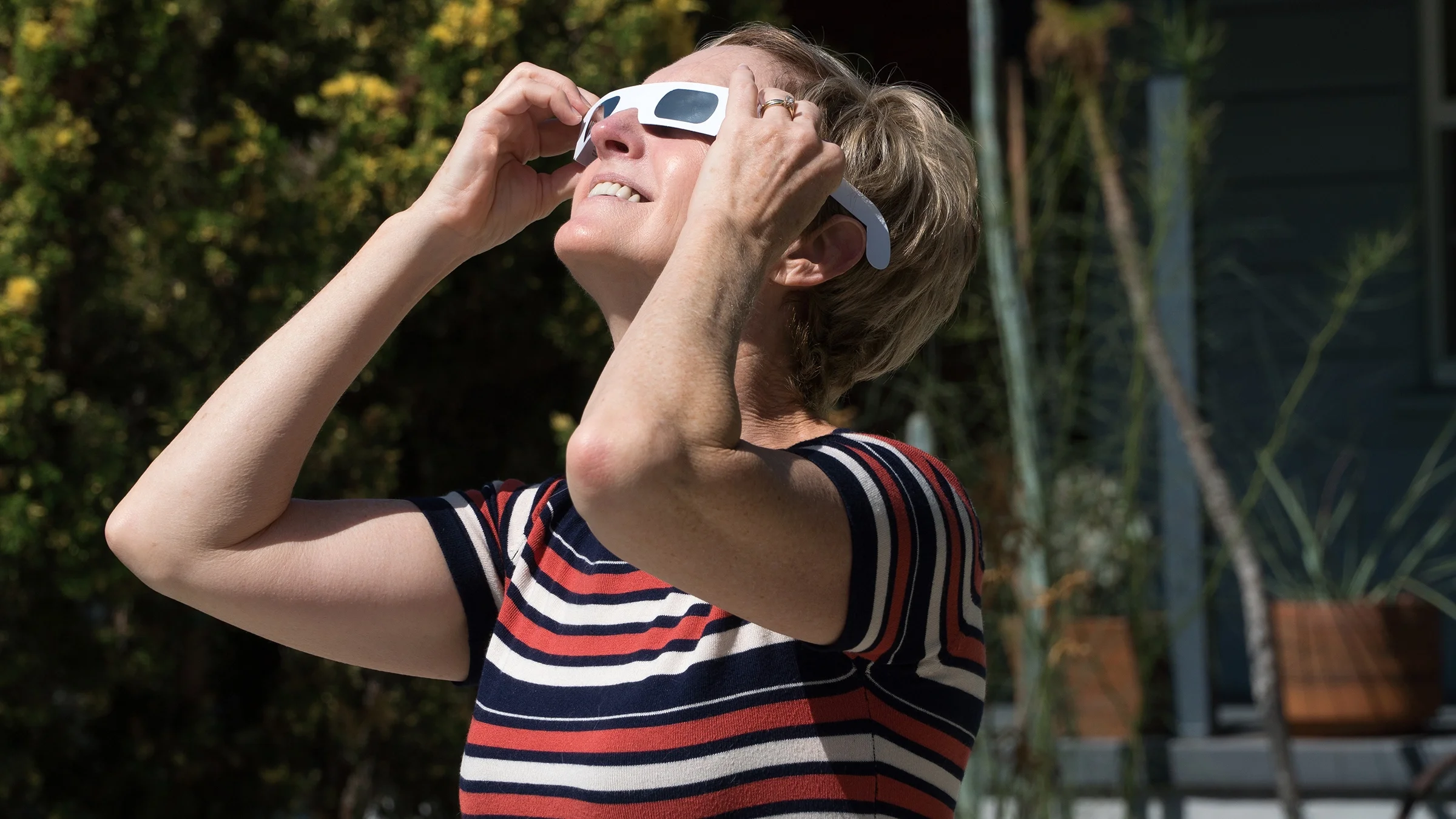Key takeaways:
Solar retinopathy is an eye condition that can cause eye pain and vision changes.
You can develop solar retinopathy from looking directly at the sun or bright lights (like welding devices or laser pointers).
Solar retinopathy usually gets better on its own, but some people develop permanent vision loss.
Somewhere along the line you probably heard “don’t crack your knuckles, you’ll get arthritis” and “don’t go out in the cold or you’ll get sick.” Many common health sayings have been debunked over time. But here is one that’s definitely true: “Don’t look directly at the sun or you’ll hurt your eyes.”
Solar retinopathy is the medical term for eye damage caused by looking at the sun. Solar retinopathy gets a lot of attention anytime there’s a solar eclipse. That’s because people end up looking at the sun for too long while awaiting the big event. But as sun gazing increases in popularity, there’s been a spike in interest in solar retinopathy.
Here’s what you should know about solar retinopathy and how to keep your eyes safe and healthy.
What is solar retinopathy?
Solar retinopathy is an eye condition that can develop when the retina gets damaged by the sun’s rays. The retina is the part of the eye that sends light signals to the brain so you can see. Without a healthy retina, you can’t see clearly.
Here are some other terms for solar retinopathy:
Photic maculopathy
Foveomacular retinitis
Eclipse retinopathy
You can develop solar retinopathy by looking directly at the sun for too long without protective eyewear. You can also develop solar retinopathy if you’re looking at the sun indirectly on a reflective surface.
People who sun gaze for health and meditative benefits are most likely to develop solar retinopathy.
Solar retinopathy cases also tend to go up whenever there’s a solar eclipse. But it’s a myth that the sun emits more dangerous rays during an eclipse. The reason for the spike is that people end up looking up at the sun too long without eye protection while waiting for or watching the eclipse.
- Acular LSKetorolac
- Lotemax GelLoteprednol
- DurezolDifluprednate
Artificial light sources can also cause solar retinopathy. These sources include:
Sparks from electrical short circuits
Lights from tanning beds
What causes solar retinopathy?
Sunlight is made up of high-energy wavelengths. When the cells in the retina get hit with too much of this energy, they get damaged and stop working. The more of this energy hits the retina, the worse the damage.
So looking at the sun for longer periods of time increases the risk of developing solar retinopathy.
Solar retinopathy isn’t the only type of eye damage you can get from sun exposure. Ultraviolet (UV) light from the sun can also lead to:
Photokeratitis (a type of painful cornea injury)
So there are many good reasons to wear eye protection whenever you’re exposed to sunlight.
What are the symptoms of solar retinopathy?
Symptoms of solar retinopathy can develop within just a few hours of sun exposure. Common symptoms include:
Blurry vision
Watery eyes
A large blind spot in your vision
Headache
Change in color perception (colors look washed out)
Vision distortion (straight lines look wavy and things look smaller than they are)
How do you treat solar retinopathy?
Solar retinopathy usually gets better on its own over several weeks to months. And that’s good news because there’s no treatment for solar retinopathy.
If you develop symptoms after being exposed to the sun, you should see an ophthalmologist. An ophthalmologist can monitor your retinas to make sure they’re healing correctly over time.
Most people completely regain their vision as solar retinopathy heals. But there’s a chance you can develop permanent vision changes if your retinas don’t fully recover.
How can you safely sun gaze or view an eclipse?
Don’t use regular sunglasses if you’re going to gaze at the sun or view an eclipse. They don’t provide enough protection, even if they have UVA and UVB protection.
Instead, invest in a pair of glasses that filters and absorbs sunlight. National Aeronautics and Space Administration (NASA), recommends welder’s glass eyewear with a “Shade 12” or higher. You can find legitimate sellers on the American Astronomical Society website.
The bottom line
Solar retinopathy is an eye condition that leads to vision changes. It happens when the sun’s rays damage the retina in the back of the eye. The most common causes of solar retinopathy are sun gazing and eclipse viewing. But you can also develop it from exposure to arc welding and laser pointers. To keep your eyes safe, always use eyewear that absorbs and filters sunlight (not sunglasses) whenever sun gazing.
References
American Association for Pediatric Ophthalmology & Strabismus. (2022). Solar retinopathy.
American Astronomical Society. (n.d.). Reputable vendors of solar filters & viewers.
Chen, J. C., et al. (2009). Solar retinopathy and associated optical coherence tomography findings. Clinical and Experimental Optometry.
Chod, R. B., et al. (2022). Solar retinopathy. American Academy of Ophthalmology.
Choi, S. W., et al. (2006). A case of photic retinal injury associated with exposure to plasma arc welding. Korean Journal of Ophthalmology.
Gurwood, A. S., et al. (2009). Patient blinded in Holland. Review of Optometry.
Laul, A. (2021). Case report: Self-induced maculopathy by 12-year-old boy. Optometry Times.
National Aeronautics and Space Administration. (n.d.). Eclipse 101.
National Aeronautics and Space Administration. (n.d.). Eclipse: Misconceptions.
Porter, D. (2022). What is ocular melanoma?. American Academy of Ophthalmology.
Stalmans, P., et al. (1999). How to protect your eyes from solar retinopathy. Bulletin de la Societe belge d’ophtalmologie.
Turgut, B. (2019). Operating microscope induced maculopathy. MedCrave.

Why trust our experts?

















